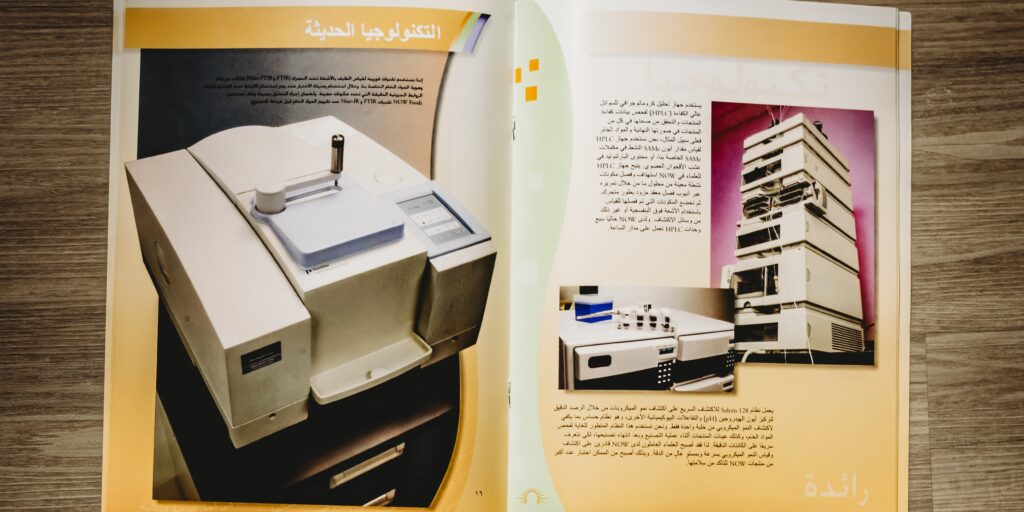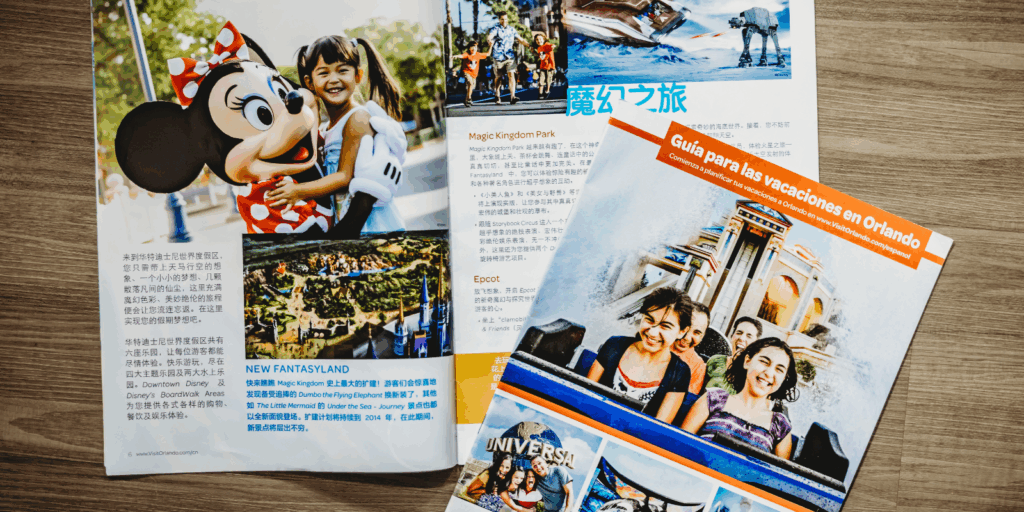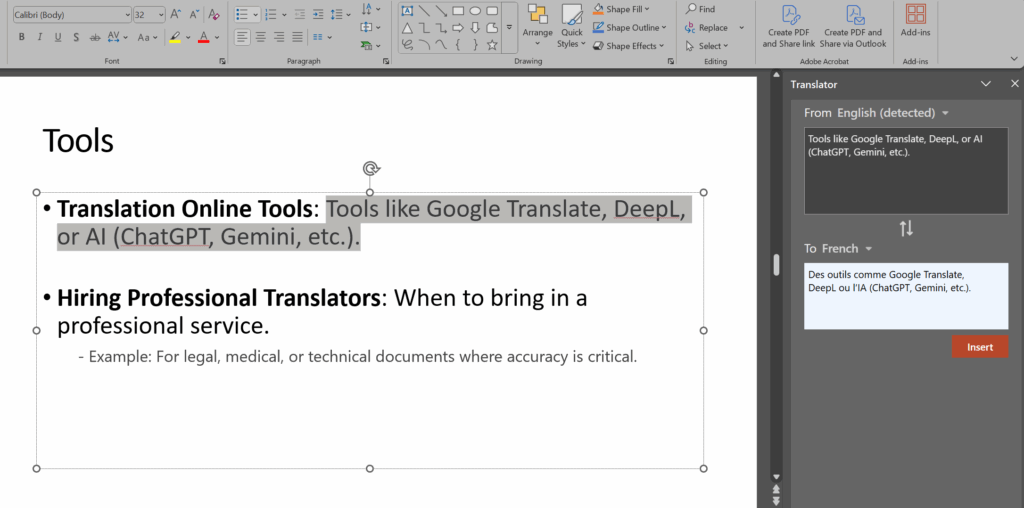
Quality translations are essential for effectively communicating across languages. We’ll teach you how to ensure that your translations meet the highest international standards of quality for translation accuracy, localization for cultural relevance, and a professional workflow that reduces effort for your team.
Effective communication is fundamental for businesses to succeed in today’s globalized world. The need to communicate across multiple languages can be a significant challenge without the right translation and localization partner. This level of communication requires linguistic skills and an understanding of cultural nuances and industry-specific jargon.
Topics covered in this article:
- What is a good quality translation?
- How do you ensure a good quality translation?
- ISO Certified Translation Companies
- Certified Translations
- Workmanship Guarantees
- A Thorough Quality Assurance Process
- Next Steps: 13 Best Practices to Ensure Quality Translations
What is a good quality translation?
A high-quality translation goes beyond merely converting text from one language to another. It involves localization, which means accurately and culturally conveying the original tone, nuances, and intent to the target audience.
Additionally, it requires efficient and effective management of translation projects, ensuring a repeatable process with excellent customer service. High-quality standards are essential when choosing a translation company.
There are various ways to assess if your translation agency is producing quality translated and localized content. We will outline the key indicators that can help you determine if a translation company is likely to deliver high-quality results.
How do you ensure a good quality translation?
Quality in translation can vary depending on the specific needs of a project, such as the type of content, target audience, and industry standards. However, a company offering certified translations, ISO certifications, workmanship guarantees, and a rigorous quality assurance process will likely deliver high-quality translations.
The translation industry’s complexity makes the quest for quality an ongoing challenge, but there are clear paths you can follow to ensure the highest quality translations.
For instance, recognizing the importance of the different quality standards, particularly those established by the International Organization for Standardization, or ISO, becomes essential. This article delves deeper into how businesses can make sure they’re getting quality translations with a certified translation company by their side.
ISO-Certified Translation Companies
ISO certifications are a hallmark of quality in the translation industry, offering clients reassurance that the company adheres to internationally recognized standards. Two specific ISO certifications are particularly relevant for translation companies: ISO 9001 and ISO 17100.
ISO 9001 – Quality Management
This certification can apply to a wide range of industries. It ensures the company consistently meets customer and regulatory requirements. In a translation agency, ISO 9001 certification indicates that the translation company has implemented processes and procedures designed to produce high-quality translations consistently. This includes everything from project management to customer feedback loops, all aimed at continual improvement and customer satisfaction.
ISO 17100 – Translation
This certification is specifically tailored to the translation industry. It focuses on the qualifications of translators, the core translation process, and the post-translation review procedures. ISO 17100 requires that all translators working for a certified company have the necessary qualifications, whether through formal education, extensive experience, or both. The certification also mandates a multi-step review process, including independent proofreading, to ensure the highest quality of translation.
To Summarize: Working with an ISO-certified translation company means that you can expect a higher level of professionalism, consistent quality, and a commitment to continuous improvement. These certifications also ensure that the company has a robust process for managing projects, which is crucial for meeting deadlines and maintaining accuracy across large volumes of work.
Why Choose an ISO-Certified Translation Company?
Companies that provide all their services in accordance with ISO 9001 and ISO 17100 have demonstrated their ability to consistently offer services that meet customer and regulatory requirements, while also committing to enhance customer satisfaction.
Choosing a translation company like Interpro, which deeply knows why ISO certifications matter, is critical for several reasons:
Consistency in Quality: Standardized procedures under ISO certifications guarantee that every project is handled in a manner that minimizes errors and ensures high-quality output every time. This consistency is crucial for businesses needing reliable translations across multiple projects and languages.
Enhanced Quality Assurance: ISO-certified companies apply rigorous quality assurance protocols. Their processes are designed to identify and rectify errors, ensuring the accuracy and reliability of translations.
Expertise and Professionalism: With requirements for translators’ qualifications clearly outlined, ISO-certified companies ensure that only skilled and experienced professionals work on your translations, enhancing the final product’s quality and accuracy.
Confidentiality: Security and confidentiality are critical in the translation industry, especially when handling sensitive information. ISO certifications require robust information security management systems, ensuring that client data is protected.
Customer Satisfaction: The procedures and systems established by ISO-certified companies are also designed to ensure that the translation services meet or exceed customer expectations, leading to higher levels of client satisfaction.
Certified Translations
Certified translations are critical for documents that require an official guarantee of accuracy. These are often used in legal, medical, or government settings where precise translation is essential. A certified translation typically includes a signed statement from the translation agency attesting to the completeness and accuracy of the translation. This certification adds a layer of accountability, ensuring that the translation adheres to specific standards required by the receiving institution.
Certified translation agencies have undergone rigorous testing and have proven their ability to translate accurately and effectively between languages. This is because the translation is not just about linguistic accuracy. It also involves an understanding of the cultural and contextual implications of the source text. The translation company must ensure that the translated document conveys the same meaning and intent as the original. This is particularly important in legal documents, where a slight misinterpretation can lead to significant legal consequences.
We dive deeper into certified translations for business in these articles:
Notarized vs Certified Translations
In addition to providing a Workmanship Guarantee, some translation agencies, like Interpro, offer certified and notarized translations. But they are different.
Certified translations include the translator’s signed statement, attesting to the accuracy and completeness of the translation—an essential requirement for many official documents.
Notarized translations involve the translator swearing before a notary public that the translation is accurate, with the notary verifying the translator’s identity rather than the translation’s quality. Notarization is often required for legal proceedings and immigration-related documentation.
When given the choice, a certified translation is the preferred high-quality standard, but you may consider just a notarized translation if it works for your business.
Workmanship Guarantee
A workmanship guarantee is a personal commitment to you from the translation company to provide extra assurance that your project will meet your expectations. This guarantee typically means that if any errors or issues are found in the translation after delivery, the company will correct them promptly and at no additional cost. It reflects the company’s confidence in its quality assurance processes and its dedication to customer satisfaction.
Interpro’s Workmanship Guarantee is:
We want you to be as confident in your translations as we are, so we stand by our work with a Guarantee of Workmanship on every project Interpro delivers.
Interpro’s experienced professionals follow ISO-certified processes, methodologies, and multilevel quality assurance steps. These are specifically designed to consistently ensure successful project outcomes.
Because of this, we are confident in saying:
Should any deliverable not conform to your project’s requirements, we will prioritize correcting any errors at no additional cost.
Total client satisfaction is our undisputed number one objective, and our job is to achieve that for each and every client.
Our goal is to reassure you that you will receive a high-quality product and that the company will stand behind its work, addressing any issues that may arise with professionalism and urgency.
A Thorough Quality Assurance Process
A thorough quality assurance (QA) process is essential to delivering high-quality translations consistently. In the translation industry, QA is not a single step but a multi-layered process designed to catch and correct errors at various stages of the project. This approach ensures that the final translation is accurate, culturally appropriate, and meets the client’s specific needs.
Translation: The first step in a robust QA process is the initial translation, conducted by a skilled translator who is a native speaker of the target language and a subject matter expert in the relevant field. This expertise ensures that the translation is not only linguistically accurate but also contextually relevant and technically precise.
Proofreading: After the initial translation, the document typically undergoes a proofreading stage. This step involves a different professional, often a second translator, who reviews the text for grammatical errors, inconsistencies, and mistranslations. This independent review is crucial as it brings a fresh perspective, making it more likely to catch errors that the original translator might have missed.
Editing: Next, the document may go through an editing phase, where the focus shifts to style, tone, and overall readability. The editor ensures that the translation flows naturally in the target language and adheres to any client-specific guidelines, such as tone of voice or industry-specific terminology.
Quality Assurance and Validation: Finally, a QA process often includes a final review or quality check, where the document is compared against the original text to ensure that all content has been accurately translated and nothing has been omitted or misinterpreted. Additional validation steps may be added for more complicated projects, such as eLearning localization or accessibility projects.
Next Steps: 13 Best Practices to Ensure Quality Translations
To maintain high standards of translation quality, it is necessary to follow certain best practices throughout the translation process. These include:
1. Start at the Source
Begin by making your source text as clear and straightforward as possible. Writing with translation in mind can significantly reduce potential issues during the translation process. This includes avoiding idiomatic expressions, cultural references that may not translate well, and overly complex sentence structures. A well-crafted source file serves as the foundation for a smooth translation process.
2. Designate a Point of Contact
Assign a dedicated point of contact (POC) within your organization who will be responsible for managing the translation project. This person should be available to answer questions, provide additional context, and make decisions as needed. Having a POC streamlines communication, ensuring that the translation team has access to the information they need to deliver accurate and timely translations.
3. Establish Project Guidelines and Turnaround Time
Before the translation process begins, establish clear project guidelines and a realistic turnaround time. This includes defining the scope, deadlines, and quality expectations. Communicate these guidelines to your translation partner to ensure that both parties are aligned on the project’s objectives and timelines.
4. Provide Source Files and Resources
Supply your translation team with all relevant source files, including any reference materials, previous translations, brand guidelines, and glossaries. Providing these resources upfront ensures that the translation team has everything they need to produce consistent and accurate translations that align with your brand’s voice and terminology.
5. Provide Examples of Successful Translations
If you’re starting a new partnership, provide examples of previous translations that either met or fell short of your expectations. This helps the translation team understand your preferred communication style and any specific nuances you want to capture in the translated content.
6. Develop Glossaries and Style Guides
Work with your translation partner to develop customized, multilingual glossaries and style guides. These tools ensure that terminology, tone, and style are consistent across all documents, contributing to a cohesive brand message. Regularly update these resources to reflect changes in your brand or industry.
7. Employ Native Speakers
Choose a translation agency that employs native speakers of the target language who are also subject matter experts in your industry. Native speakers have a deeper understanding of cultural nuances, idiomatic expressions, and local contexts, which enhances the accuracy and relevance of the translation.
8. Adapt for Local Culture
Localization is key to ensuring that translated content resonates with the target audience. This involves more than just translating text; it requires adapting content to fit the cultural context, preferences, and expectations of the target audience. Understand the differences between localization and translation to ensure that your content is both culturally and linguistically appropriate.
9. Use Advanced Technology
Teams that leverage advanced translation technology, such as translation memory tools and glossaries, will maintain consistency and efficiency throughout the project. These tools help translators avoid repetition, maintain terminology consistency, reduce costs and reduce turnaround times, particularly for large or ongoing projects.
10. Implement Multi-Step Quality Checks
Quality assurance should be an integral part of the translation process. Implement a multi-step quality check system, including proofreading and editing by separate professionals. This helps catch errors, ensure readability, and improve the overall quality of the final product.
11. Get Involved in the Quality Assurance Process
Quality assurance is an ongoing process that benefits from your active involvement. Consider working with an Internal Country Reviewer (ICR) who can provide feedback on the translation. Involve trusted community members or employees who speak the language to review the content and offer insights that can improve the translation’s accuracy and cultural relevance.
12. Commit to Continuous Improvement
Translation is an iterative process. Encourage feedback from your translation partner and other stakeholders to identify areas for improvement. Use this feedback to refine processes and enhance the quality of future translations.
13. Develop a Long-Term Partnership
Building a long-term relationship with your translation agency is crucial for consistent, high-quality translations. A trusted partner who understands your brand, industry, and target audience can deliver more effective and culturally resonant translations over time. Invest in this relationship to ensure ongoing success in your multilingual communication efforts.
Ultimately, an unwavering commitment to quality, transparency, professional expertise, and customer satisfaction is what sets a good translation agency apart from a great one. Remember, when your business crosses borders, quality translations don’t just convey words; they bridge cultures and connect worlds.
Category: Featured, Translation
Tags: Guides
Don't forget to share this post!
Stay Updated with Interpro
Subscribe to our newsletter for the latest updates and insights in translation and localization.







